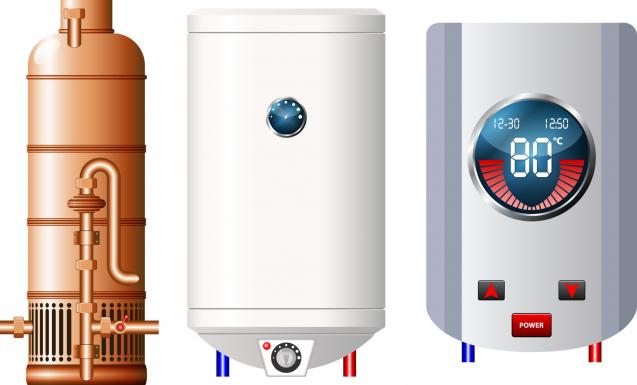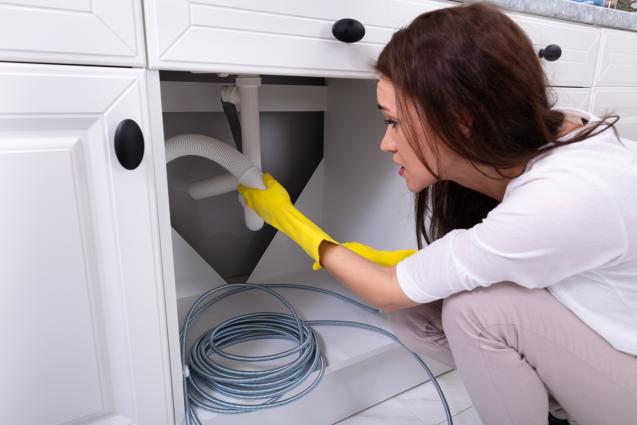
Roof Plumbing Maintenance Checklist for Every Season
Spring Roof Plumbing Maintenance Checklist
Spring is the ideal time to assess your roof plumbing after the harsh winter months. The following tasks will help ensure your roof is ready for the warmer season:
- Inspect gutters and downspouts for debris and blockages. Winter can leave behind leaves, twigs, and other debris that may clog your gutters and downspouts. Clearing these blockages will prevent water from pooling on your roof, reducing the risk of leaks and water damage.
- Check for and repair any winter damage to roof tiles or shingles. The cold and snow can cause roof tiles or shingles to crack or become loose. Inspect your roof for any visible damage and have any issues repaired promptly to prevent further deterioration.
- Clean and test roof drainage systems. Ensure your drainage systems are free from obstructions and functioning correctly. Test the system by running water through it to check for proper flow and drainage.
- Examine seals around roof penetrations such as vents and chimneys. Look for any gaps or cracks in the seals around roof penetrations. These areas are often prone to leaks and should be repaired to keep your roof watertight.
Summer Roof Plumbing Maintenance Checklist
The summer heat and storms can be particularly challenging for your roof plumbing. Use this checklist to maintain your roof during the hottest months:
- Ensure roof ventilation is adequate to prevent overheating. Proper ventilation helps maintain a stable temperature in your attic, reducing heat buildup and extending the life of your roof. Check that your vents are clear and functioning correctly.
- Check for any signs of algae or moss growth. Damp conditions can lead to the growth of algae or moss on your roof. These organisms can damage roofing materials and should be removed. Special treatments or professional cleaning may be required.
- Look for any cracked or damaged roof plumbing materials. High temperatures and UV radiation can weaken roof plumbing materials. Inspect pipes, flashing, and other components for signs of wear and tear and replace them as needed.
- Inspect for leaks and signs of water damage after summer storms. Heavy rain and thunderstorms can reveal weaknesses in your roof plumbing. Check your attic and ceilings for signs of leaks or water damage and address any issues immediately.
Autumn Roof Plumbing Maintenance Checklist
Autumn is the time to prepare your roof for the upcoming winter. The following tasks will help safeguard your roof plumbing system:
- Clear fallen leaves and debris from gutters and roof drains. Regularly remove leaves and debris from your gutters and drains to prevent clogs that can lead to water backups and roof damage.
- Inspect and repair flashing around chimneys and vents. Flashing is susceptible to corrosion and damage over time. Examine these areas closely and repair or replace any damaged flashing to avoid leaks.
- Check for any developing rust on metal roof components. Metal components such as gutters, downspouts, and flashings can rust, especially after summer rains. Treat any rust spots and consider applying a protective coating to prevent further corrosion.
- Prepare roof plumbing for the upcoming winter by insulating pipes, if necessary. Insulating exposed roof plumbing pipes will help prevent freezing and bursting during colder months. Use insulation sleeves or heat tape where needed.
Winter Roof Plumbing Maintenance Checklist
Winter demands special attention to prevent damage from snow and freezing temperatures. Follow these tips to keep your roof plumbing in excellent condition during the colder months:
- Check for ice dams and clear snow from the roof if necessary. Ice dams can form at the edges of your roof, leading to water backup and leaks. Clear any excess snow and ensure proper insulation and ventilation to prevent ice dam formation.
- Inspect roof plumbing for any signs of leaks caused by freezing conditions. Freezing temperatures can cause pipes to burst or develop leaks. Regularly inspect your roof plumbing for signs of leaks and address any issues promptly.
- Ensure heating tapes on gutters and downspouts are functioning. Heating tapes can help keep your gutters and downspouts clear of ice. Check that they are working correctly and repair or replace them as necessary.
- Monitor for any winter storm damage and perform timely repairs. Winter storms can cause significant damage to your roof. After each storm, inspect for any visible damage and perform repairs as needed.
Year-Round Roof Plumbing Maintenance Tips
In addition to seasonal tasks, there are year-round maintenance practices that will help keep your roof plumbing system working efficiently:
Conduct bi-annual professional roof inspections. Hiring a professional to inspect your roof twice a year can help recognise roof repair needs early on, preventing costly damage in the future.
Maintain a roof maintenance logbook for tracking repairs and inspections. Keeping a detailed record of all maintenance activities will help you stay organised and track the health of your roof over time.
Utilise technology for roof monitoring and leak detection. Modern technology, such as roof sensors and smart leak detectors, can provide real-time monitoring and alert you to potential problems before they become serious.
Maintain proper attic insulation and ventilation to support roof plumbing health. Ensuring your attic is well-insulated and ventilated will reduce the risk of ice dams, overheating, and moisture buildup, all of which can impact your roof plumbing.
Conclusion
Seasonal roof plumbing maintenance is crucial for the longevity and performance of your roofing system. By following the checklists for each season, you can address potential issues early and keep your roof in excellent condition. Regular maintenance not only protects your home but also saves money on future repairs. By conducting bi-annual professional inspections, keeping a maintenance logbook, utilizing modern technology, and ensuring proper attic insulation and ventilation, you can support the overall health of your roof plumbing system year-round. It's never too late to start a preventative maintenance routine and create a personalised schedule that suits your home's specific needs.



